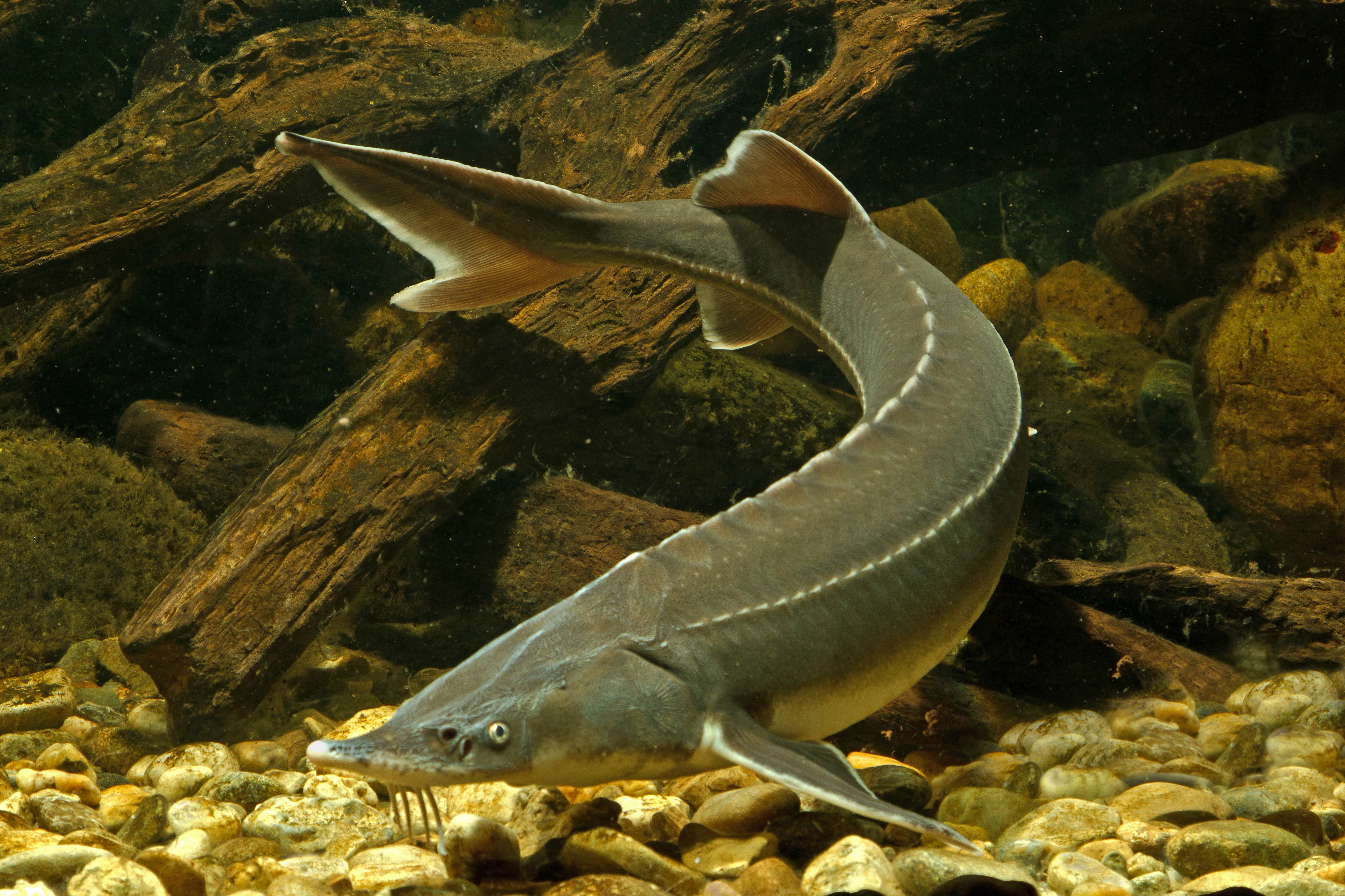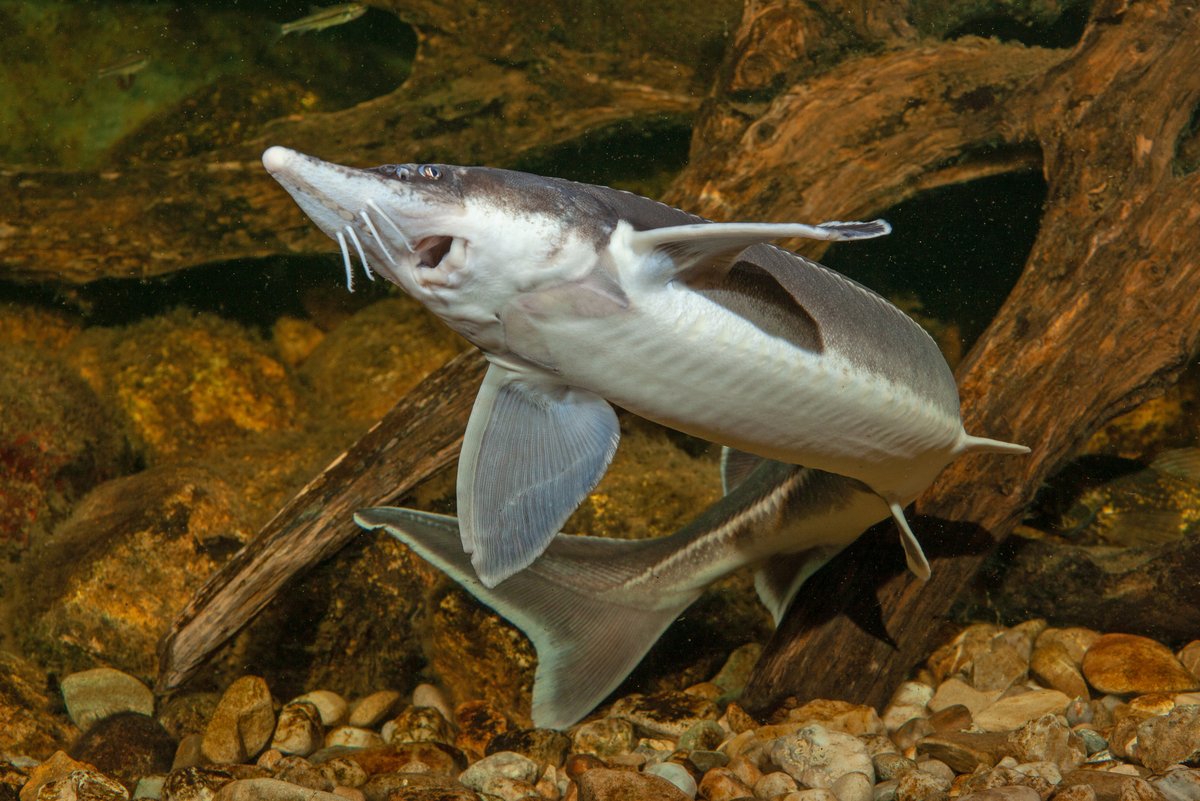
Living fossil with extensive genome change
Evolutionary biologist Axel Meyer from the University of Konstanz involved in sequencing the extensive genome of the sturgeon
Sturgeons lived on earth already 300 million years ago and yet their external appearance seems to have undergone very little change. A team of researchers from the universities of Würzburg and Konstanz as well as the Leibniz Institute of Freshwater Ecology and Inland Fisheries (IGB) in Berlin has now succeeded in sequencing their highly complex genome, delivering a missing piece of the puzzle essential to understanding the ancestry of vertebrates. They present their findings in the current issue of the expert journal Nature Ecology and Evolution published on 30 March 2020.
Sometimes referred to as the "the Methuselah of freshwater fish", sturgeons and their close relatives are very old from an evolutionary point of view. Fossils indicate that sturgeons date back 250 million years and have changed very little during this period, at least as far as their external appearance is concerned. So it is not surprising that already Charles Darwin coined the term "living fossils" for them. Internally, however, fundamental genome restructuring took place: They duplicated their whole genome several times. Scientists from the University of Würzburg and the Leibniz Institute of Freshwater Ecology and Inland Fisheries (IGB), supported by evolutionary biologist Professor Axel Meyer and academic staff member Dr Joost Woltering from Konstanz, as well as colleagues from France and Russia, have now successfully sequenced the genome of the sterlet (Acipenser ruthenus), a relatively small species of sturgeon.
Ancestors of the vertebrates
“Sturgeon genomes are an important piece of the puzzle that helps us understand the ancestry of vertebrates. And this has been missing until now,” Professor Manfred Schartl explains the reasons why scientists are interested in this fish species. Manfred Schartl is the lead author of the recently published study. Sturgeons are among the oldest species on earth in terms of evolutionary history. They are the ancestors of more than 30,000 species of bony fish that occur today – and thus of more than 96 percent of all living fish species and about half of all known vertebrate species. Time seems to have forgotten the sturgeons.
The scientists were able to show that sturgeons branched off onto their own evolutionary path at some point during the Upper Devonian or Carboniferous Period about 345 million years ago. Their external appearance has changed very little since that time but, you would not know it from their genetic material, their genome. The geneticists had to take a close look at the proteins encoded by the genes of the sterlet. And indeed, their calculations reveal that this so-called protein evolution has proceeded at a very slow pace. The rate of protein evolution of the sterlet is similar to that of the coelacanth or of sharks – two fish species that have been roaming the oceans almost unchanged for more than 300 million years as well.
Extensive genome change 180 million years ago
But, the sequence analysis also revealed that the sterlet genome comprises 120 chromosomes, about 47,500 protein-coding genes and 1.8 billion base pairs (about 6 times large than our genome). The researchers also showed that the sterlet duplicated its complete genome some 180 million years ago, leaving the species with four sets of chromosomes, which is called tetraploidy in scientific jargon. The genome duplication does not come as a complete surprise: “Such processes are very rare, but had had a major impact on the evolution of the vertebrate genome,” says Manfred Schartl. Axel Meyer adds: “Already our very old fish ancestors underwent "whole genome duplication" twice in their evolutionary history. The ancestor of modern fish, however, went through this process a third time.” His laboratory at the University of Konstanz had discovered this fact, that pertains to all 30,000 modern fish species, already 20 years ago in collaboration with Manfred Schartl’s laboratory in Würzburg.
What did surprise the scientists though was the fact that this duplication of the genome happened so far back in the long history of the sturgeon “Over this long time span, we would have expected the genome to change more profoundly because in tetraploid organisms gene segments are often lost, silenced or acquire a new function over time,” says evolutionary biologist Axel Meyer.
Genetic research to protect species
Gene sequencing is an important basis for protecting sturgeon species. In the future, we will be able to determine the sex of the animals using genetic analyses which will greatly facilitate breeding. This will allow us to control reproduction and support the management of breeding populations. It is a milestone in our efforts to preserve these ancient species.
Sturgeons are native to subtropical, temperate and sub-Arctic rivers, lakes and coastlines of Eurasia and North America. Sturgeons are long-lived and reproduce late, typically not before the age of ten. In many sturgeon species, the adult fish repeatedly migrate from the sea into freshwater to spawn. They are highly sought after for their eggs – better known as caviar.
Because of habitat destruction, river fragmentation, marine pollution and 2,000 years of caviar production, most sturgeon species are now on the brink of extinction. Due to a ban on wild caviar trade, sturgeon aquaculture has become an important industry which can contribute to protecting wild populations by securing the market upply.
Key facts:
- Original publication: The sterlet sturgeon genome sequence and the mechanisms of segmental rediploidization. Du Kang, Matthias Stöck, Susanne Kneitz, Christophe Klopp, Joost Woltering, Mateus Adolfi, Romain Feron, Dmitry Prokopov, Alexey Makunin, Ilya Kichigin, Cornelia Schmidt, Petra Fischer, Heiner Kuhl, Sven Wuertz, Jörn Gessner, Werner Kloas, Cedric Cabau, Carole Iampietro, Hugues Parrinello, Chad Tomlinson, Laurent Journot, John H. Postlethwait, Ingo Braasch, Vladimir Trifonov, Wesley C. Warren, Axel Meyer, Yann Guiguen and Manfred Schartl. Nature Ecology & Evolutuion, https://doi.org/10.1038/s41559-020-1166-x
- Project to sequence the genome of the sturgeon at the Universities of Konstanz and Würzburg as well as the Leibniz Institute of Freshwater Ecology and Inland Fisheries (IGB), Berlin.
- Headed by Professor Manfred Schartl from the University of Würzburg, with participation of evolutionary biologist Professor Axel Meyer from the University of Konstanz.

